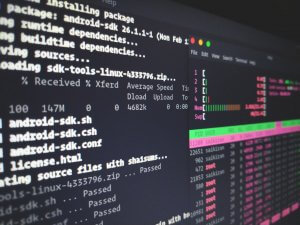Op-Ed: How Automation is Impacting Asset Manager Workflows
Leon Brown, Account Manager at BidFX, explains why asset managers are increasingly looking at automation for enhanced productivity, as opposed to cutting headcount.

Popular opinion now agrees that automation is not a nefarious ploy to reduce staff headcount, but an intelligent business decision designed to increase efficiency and enhance productivity. In the early days of sell-side eFX, the initial resistance from FX sales staff was due to their fear of ‘computers taking our jobs!’ but the reality was that simple processes like buying and selling currency at spot were transferred to the client for electronic execution, and bank staff were able to concentrate on revenue generating activities such as producing trade ideas and growing relationships with their most valuable clients – increased efficiency, enhanced productivity.
An asset managers’ workflow similarly has many opportunities to create new efficiencies and the pace of change is increasing. Asset managers static workflow currently utilises a minimum of two systems to get FX orders executed. Their Order Management System (OMS) being one, and the Execution Management System (EMS) being the other. This number increases if spreadsheets are used anywhere in the process and if a separate booking software is used post-trade. All these systems create multiple opportunities for human error which can end up being costly in both time and money. Pre-trade allocations have become easier with improvement in the quality of OMS software but can still be time consuming. And if we revisit the revenue generating activities idea mentioned earlier, most Asset Manager scenarios don’t use FX for speculation purposes – it’s purely the ancillary, or hedging, part of an Equity or Fixed Income process. Some trades are so small or insignificant that they cost more in time taken to check, enter, re-check and execute them than they produce in cost benefit for the firm.
So, to help their Asset Manager client base to increase efficiencies and enhance productivity in their workflow, there needs to be infrastructure that allows for multi-layered automation that can take an order directly from the OMS, shape it, execute it and book it with one click of a button. The decision-making tool to merge trades is called a Shaping Plan and it can take many forms. All shaping plans are established in co-operation with the client and a typical one might include auto netting, rationalising deal types, specific currency pairs/number of LPs/sizes, defined weightings, etc. All this automation also needs to meet full allocation workflow and connections to their OMS.
The options are endless.
Of course, every trading system needs to be tested and refined over time and it’s the reason why extensive work is done in test environments to ensure optimum performance before making a seamless transition into a clients’ production environment. The setup of these automated workflows takes time and patience, but they should be likened to sharpening the axe before chopping down a tree. The time taken to get it right at the start will save considerably more hours into the future.
Automation was once ‘something that’s coming’, something for ‘the future’ but the future is here and it’s happening now! It is creating efficiencies of both time and resources for either complex scenarios or laborious ones. And where Asset Managers are concerned, the acceleration of interest is very clear to see from our vantage point.

Highly experienced in FX sales, Leon Brown is an Account Manager at BidFX, with over 15 years’ experience in investment banks including Goldman Sachs and Société Générale.
The subject matter and the content of this article are solely the views of the author. FinanceFeeds does not bear any legal responsibility for the content of this article and they do not reflect the viewpoint of FinanceFeeds or its editorial staff.









